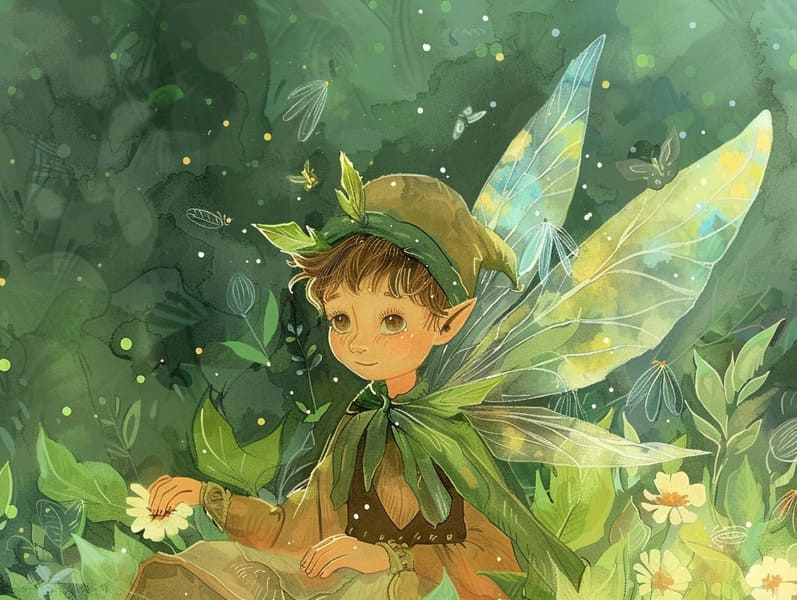
Evening is a treasured time for caregivers and children. It’s a moment to settle down, get cozy, and partake in the beauty of sleepy-time tales.
For generations, children's bedtime stories have been a treasured legacy, offering more than just a way to rest. They provide an prospect for relationship building, development, and sparking inventiveness.
Why Bedtime Stories are Beneficial
Children's bedtime stories serve more than a way to close the day. They play a important role in a child’s growth and in enhancing the guardian-child connection. Here’s why they are beneficial:
1. Closeness Moments: Nightly storytelling strengthens a special time of affection between caregivers and children. It’s a moment of affection that helps children feel valued and comforted.
2. Language Skills: Experiencing stories helps children develop their language skills. They acquire new expressions, understand language rules, and enhance their auditory and understanding abilities.
3. Creative Development: Kids' stories usher them to fantastic worlds, sparking inventiveness. They dream of characters, settings, and adventures, which ignites their innovation.
4. Emotional Skills: Stories for little ones often present characters facing problems and emotions. These tales help kids understand and manage their own reactions, promoting emotional intelligence.
5. Brain Growth: Engaging with a story helps children develop concentration, remembrance, and analytical skills. They learn to follow stories, remember facts, and deduce results.
Making Bedtime Stories a Habit
Establishing a bedtime habit that embraces reading narratives is manageable and beneficial. Here’s how to make it a valued part of your sleep-time tradition:
1. Choose a Comfortable Spot: Select a relaxing place where you and your child can snuggle up without noise. A snug bed or a snug reading nook works well.
2. Establish a Routine Time: Pick a set time each night for reading. Dependability helps children know what to expect and makes the practice simpler to continue.
3. Select Age-Appropriate Stories: Identify tales that are appropriate for your child’s understanding. Preschoolers might like books with pictures with simple narratives, while older kids may enjoy longer stories with more detailed stories.
4. Bring the Story to Life: Make sure the tale be captivating by employing different tones and voices, adding noises, and having your child to be involved. Ask points about the story to hold their attention.
5. Make a Peaceful Setting: Lower the lights, use quiet tones, and create a relaxing environment to help your child get ready for sleep.
Best Bedtime Story Sources
There are many places where you can find perfect bedtime stories for children. Here are some suggestions to consider:
1. Books for Children: Visit your nearby library or bookstore to find a wide selection of bedtime stories for kids. Checking out the choices together can be a delightful activity that also enables children to pick stories that appeal to them.
2. Internet Sources: There are many internet sites that offer free bedtime stories. Sites like kids' story platforms provide a variety of short stories for kids that you can download. These websites are great for finding new and assorted stories without paying.
3. Story Apps and Audiobooks: For nights when you’re too drained to read, try audiobooks or storytelling apps. These can provide a soothing voice to read your child a story, ensuring they still get their bedtime story fix. Apps often offer interactive elements that can involve them further.
4. Tailored Stories: Write your own stories fitting your child’s passions. Personalized stories can be very engaging and meaningful. You can include your child in the creation process, making them a part of the adventure.
Positive Aspects of Short Stories
Quick stories for bedtime are especially useful for bedtime. They provide all the good points of longer stories but are more to the point, making them perfect for winding down before sleep. Here’s why short stories are a good choice:
1. Easy to Follow: Concise narratives are clear and easy for children to follow, even after a long day. They can easily grasp the plot and enjoy the story without getting lost.
2. Fast Engagement: Compact stories rapidly engage children, seizing their focus and curiosity. This makes them suitable for keeping bedtime customs effective yet enjoyable.
3. Flexible awesome site Choices: Quick stories make possible for variety in your bedtime narrative. You can find a different story each night, keeping the practice interesting and exciting for your child.
4. Manages Time Well: For busy parents, to-the-point tales are a time-efficient way to ensure children still get their nightly dose of storytelling. They fit well into a tight schedule while still offering the full positives of a bedtime story.
The Charm of "Read Me a Story"
The simple phrase, “Tell me a story,” can offer a world of magic for children. Agreeing to this request not only meets a child’s want for attention and engagement but also builds lasting occasions. Here’s why it’s wonderful:
1. Connection: Narrating to your child strengthens a deep emotional link. It’s a time for closeness, sharing, and bonding.
2. Legacy: Building a bedtime story practice creates a beloved tradition that children expect every night. It’s a custom that can be continued through generations.
3. Joint Growth: As you tell tales, you’ll observe your child’s growth and progress. Their reactions, reactions, and understanding of the stories change, offering insights into their developing minds.
4. A Safe Haven: Bedtime stories provide a safe space for children to explore emotions, face fears, and find comfort in the recognizable presence of a parent.
End Thoughts
Nightly tales for children are a vital tool for supporting a child’s development and forming unforgettable memories of closeness.